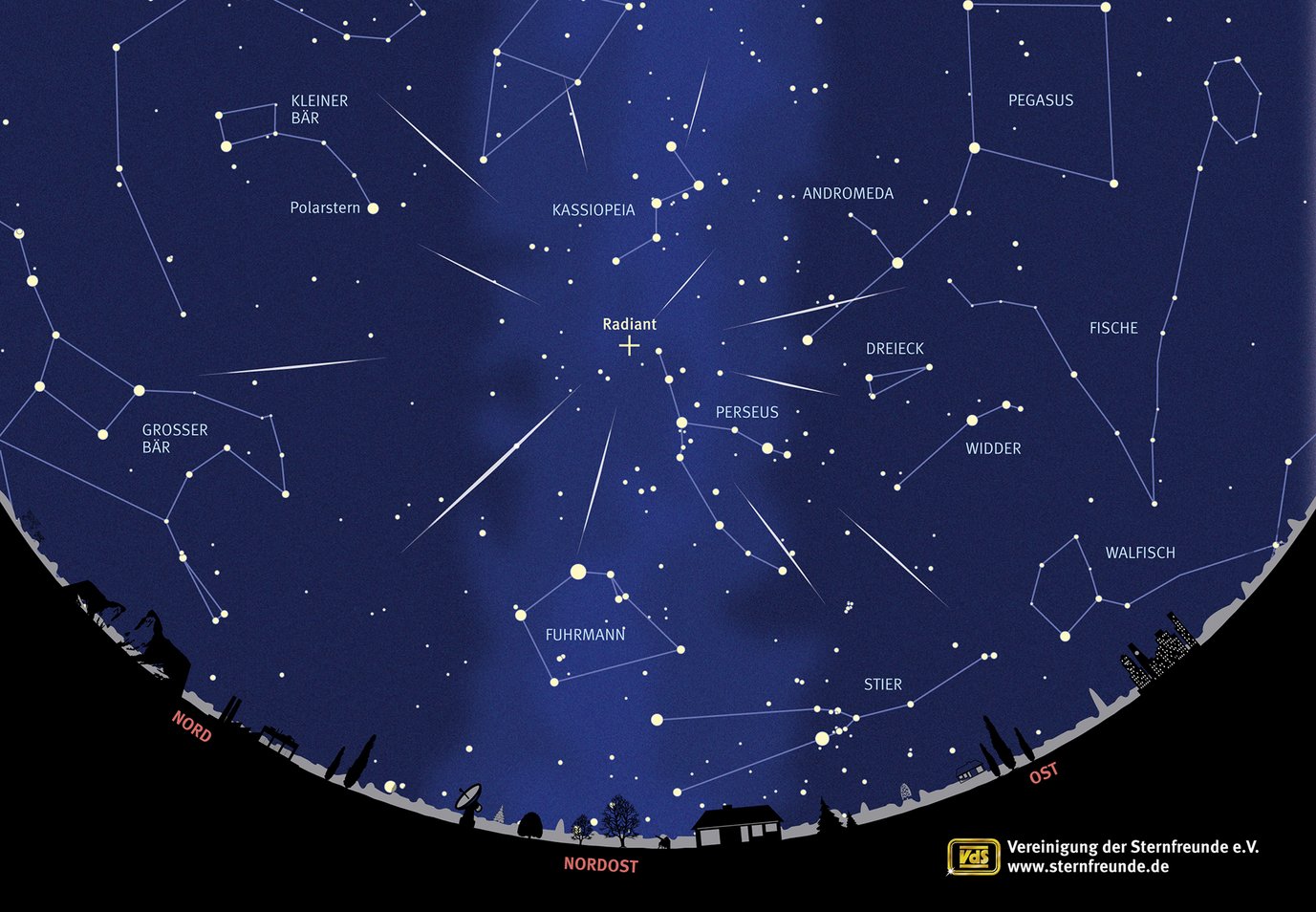Perseids: Summer nights with shooting stars in August
This year, the Perseids meteor shower will reach its peak on the morning of August 12th. On the nights of 11th to 12th and 12th to 13th August the Moon rises after midnight, so the late evening hours are not brightened by moonlight - ideal for looking out for the Perseids. To do so, look eastward, where the constellation Perseus rises, after which these shooting stars were named.
Midsummer is the best time for shooting stars: Already from mid to late July the first Perseid meteors appear in the sky; they seem to come from the constellation Perseus, hence their name. The Perseids are a very reliable meteor shower, with a noticeable increase in the number of shooting stars for weeks every year. The number of shooting stars increases until August 12th and then decreases again towards the end of the month.
Up to 100 shooting stars per hour are expected this year - but the exact time of the maximum is unfavourable for observers in Europe, as it falls in the morning hours of 12 August. During the nights around the maximum, however, 20-50 shooting stars per hour are still possible.
As Perseus is actually a typical autumn and winter constellation, it is still low above the eastern horizon in the evening in summer and only rises higher during the night. The most Perseid meteors can therefore usually be seen in the early morning hours. Unfortunately the waning Moon also enters the stage and brightens the sky in the days around the maximum in the second half of the night this year, so that fainter shooting stars are no longer visible. However, the Perseids also often have quite bright meteors, which can be seen even in moonlight.
The best conditions are therefore - provided the skies are clear - in the late evening hours of 11 and 12 August before moonrise. If you want to look out for the Perseids, you should ideally go to a place with a clear view and without disturbing ambient light and make yourself comfortable with a deck chair, a mattress or a picnic blanket. Optical aids such as binoculars or telescopes are not required.
Aside from the Perseids, the night sky currently also offers a veritable parade of planets: The strikingly bright Jupiter is clearly visible almost throughout the night and moves together with the somewhat fainter Saturn at its side from southeast to southwest. The red planet Mars rises in the east shortly before midnight and shows off in the second half of the night. In the early hours of the morning, Venus stands as a bright morning star in the east, and before sunrise in the first half of August, fleeting Mercury can also be seen immediately above the eastern horizon.

